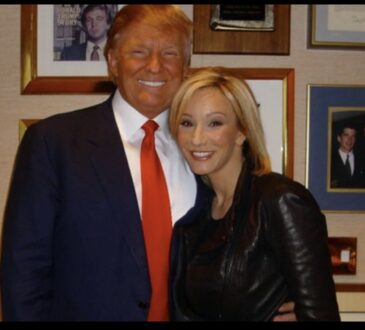Donald Trump just hit an all-time high approval rating, White House says. Here’s where he stands

The White House is proudly promoting what it calls a significant achievement for President Donald Trump as he reaches a new milestone in his approval ratings. According to a poll conducted by the Daily Mail in partnership with J.L. Partners, Trump’s approval rating has climbed to 55%, the highest this particular poll has ever recorded for him.
This means that a little over half of those surveyed said they approve of the way he is handling his job as president, while 45% expressed disapproval. The poll surveyed 867 registered voters between August 21 and September 1 and carries a margin of error of plus or minus 3.3 percentage points.
Administration officials described the numbers as proof that Trump’s policies and leadership are resonating with voters, highlighting his approach to federal oversight in Washington, D.C., his handling of border security, and other agenda items they consider priorities.
Despite the White House’s enthusiasm, this single poll does not align with the broader picture painted by other recent surveys. Polling data from several reputable sources released during the same week show Trump’s approval ratings hovering much lower, with more Americans disapproving than approving. Nate Silver’s “Silver Bulletin” analysis, which often compiles and evaluates multiple polling sources, placed Trump’s approval at 44.1%, with 51.7% disapproval.
The New York Times’ daily poll tracker reported similar results, showing 43% of respondents approving of Trump’s presidency and 52% disapproving. Real Clear Politics, which combines data from multiple polls to produce an average, found Trump at 45.4% approval against 50.9% disapproval.
Data journalist G. Elliott Morris, through his “Strength In Numbers” project, presented an even wider gap, reporting that Trump’s approval is closer to 41.9% when considering all adults, with 53.7% saying they disapprove of his leadership.
He went as far as to say that this makes Trump the most unpopular president at this stage of a term in modern history. The Economist also reported figures consistent with this broader trend, showing 41% support and 55% disapproval.
For context, Trump’s approval ratings have fluctuated widely during his political career. Before this latest Daily Mail/J.L. Partners poll, his previous high points had been notably lower.
NBC News previously analyzed his numbers and found his approval had tied at 47%, while Gallup reported in February 2020, during his first term, that he reached his personal best of 49%. The Daily Mail had also measured him at 49% in July of this year, so the jump to 55% represents a sudden and significant rise according to their survey.
The White House is using this particular poll as evidence that Trump is gaining momentum and that his strategies are working to win over more of the public. They argue it shows Americans are responding positively to his promises to restore control in Washington and take a tougher stance on border issues, along with other areas of focus.
However, analysts caution against relying on a single poll to assess the overall mood of the nation. With several other major polling organizations reporting much lower figures and higher disapproval, it is clear that Trump remains a deeply polarizing figure.
A large portion of the country continues to strongly support him, while an equally large or larger group remains firmly opposed to his leadership.
This split in public opinion reflects the broader political climate as the nation heads toward the next major election cycle. Supporters see the 55% approval figure as a sign that Trump is regaining ground and consolidating his base, possibly even expanding it.
Critics, on the other hand, point to the lower averages from other polls as proof that his popularity is overstated and that many Americans are dissatisfied with his policies, tone, and leadership style.
The contrasting data highlights how fragmented public perception has become, and how one poll can be used by political figures to shape a narrative that may not fully reflect the overall reality.




